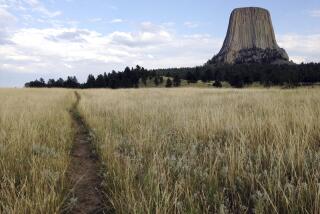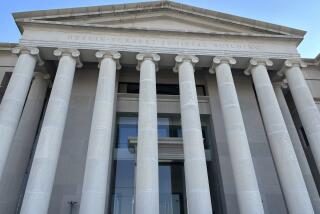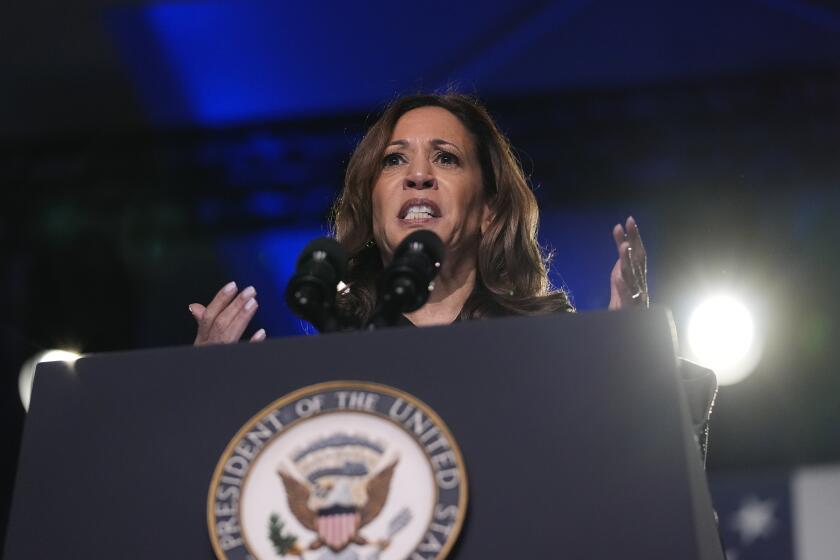As Baghdad protests mount, attack on Shiite shrine kills 26
Protests and anger over the security situation in Iraq mounted Thursday at the site of a massive truck bombing by the Islamic State group this week in Baghdad as the death toll continued to rise and an attack north of the capital killed dozens more.
The Baghdad attack Sunday — the deadliest one in Iraq since the 2003 U.S.-led invasion — has stoked public unrest and spurred Iraqi officials to announce a number of new security measures. However, smaller-scale bombings and attacks have persisted in the days that followed.
Late Thursday night, an attack carried out by multiple suicide bombers and gunmen on a Shiite Muslim shrine in Balad killed 26 people and wounded 52, according to police and hospital officials.
Earlier Thursday, hospital and police officials said the death toll from Sunday’s Baghdad attack now stood at 186, with about 20 people still missing, as more remains were recovered from the rubble.
The officials spoke on condition of anonymity as they were not authorized to talk to the news media.
However, Ahmad Roudaini of the Health Ministry’s media office said the death toll is 292.
The discrepancy in the numbers could not immediately be reconciled. Many of those killed have had to be identified through DNA testing because their bodies were burned beyond recognition.
On Thursday evening, a crowd of angry friends and family members of the victims tried to push into one of the buildings hit in the truck bombing, but civilian volunteers held them back.
The Islamic State suicide bomber had detonated his explosives in Baghdad’s central Karada neighborhood, outside a shopping mall in a street crammed with people preparing for the Eid al-Fitr holiday. The area, packed with shops, cafes and restaurants, had swelled overnight with people eager for a respite from the daily fasting during the holy month of Ramadan.
Mustafa Hassan, one of the men gathered at the scene Thursday, said he had volunteered to help sift through the debris after authorities failed to do so. Hassan, wearing a surgical mask and gloves, held up two plastic bags that he believed contained charred human flesh.
Roudaini said the Health Ministry continues to help transport the remains of the dead to Baghdad’s forensic lab or to the city morgue, but he said the scale of the explosion has overwhelmed the teams that normally respond to such attacks.
“Till now there are maybe still some dead under the building, we don’t know,” Roudaini said.
But Hassan, who said he had been coming every day to the site of the attack, insisted that only firefighters were seen there, no one else. As he spoke to reporters, a man behind him pushed past an improvised barrier and ran into the burned-out building.
“He’s looking for his wife, she’s still missing, he wants to find anything, even just an earring,” Hassan said.
Moments later, the man was carried out of the building by a group of volunteers. Hassan said he had probably fainted from grief.
“It happens a lot here,” he said.
Hundreds gathered in the street, chanted religious slogans and waved Iraqi and Shiite militia flags. Hours after the bombing, Islamic State said it had targeted Shiites, whom the extremist Sunni group consider to be apostates. Many of the Karada victims were Shiites, but many Sunnis and Christians were also among the dead.
Others gathered in Karada on Thursday also blamed the government for failing to secure the city.
“People are getting more and more angry,” said Hussein Samir, 24. “Every day that people have to think about this tragedy, it just makes them more upset.”
After the Baghdad attack, Prime Minister Haider Abadi announced new measures, including that much-disputed bomb detection wands would no longer be used by security forces. Experts have repeatedly pronounced the wands bogus. Abadi also said that aerial scanning measures would be stepped up to improve intelligence gathering in Baghdad and that the ring of checkpoints around the capital would be tightened. It is unclear whether any of those measures have yet been implemented.
The Balad attack began when a suicide bomber targeted policemen guarding the entrance to the Sayyid Mohammed shrine 50 miles north of the capital. A second bomber entered the shrine with nine gunmen, targeting security forces as well as families gathering to celebrate Eid al-Fitr, the holiday marking the end of the holy month of Ramadan. Police officials said a third bomber was killed before he detonated his explosives.
More than two hours after the Thursday night attack began, police officials said that the situation was under control and that all 12 attackers had been killed.
Officials spoke on condition of anonymity as they were not authorized to release information to the media. No group immediately claimed responsibility for the attack.
At the site of the Baghdad blast, hundreds of death notices have been plastered over what’s left of burned-out buildings on either side of a once-bustling thoroughfare.
Muhammad Mehdi, an arts school student, said he hopes the buildings are kept as they are.
“If they just wash this away and rebuild, we will forget about what happened here. We’ll never learn our lesson,” he said.
ALSO
Bangladesh blast, gun battle kill 4 during Eid prayers
What does it mean that terrorists will bomb even Muhammad’s burial place?
Islamic State shifts strategy from building territory to spreading terror worldwide
More to Read
Sign up for Essential California
The most important California stories and recommendations in your inbox every morning.
You may occasionally receive promotional content from the Los Angeles Times.










